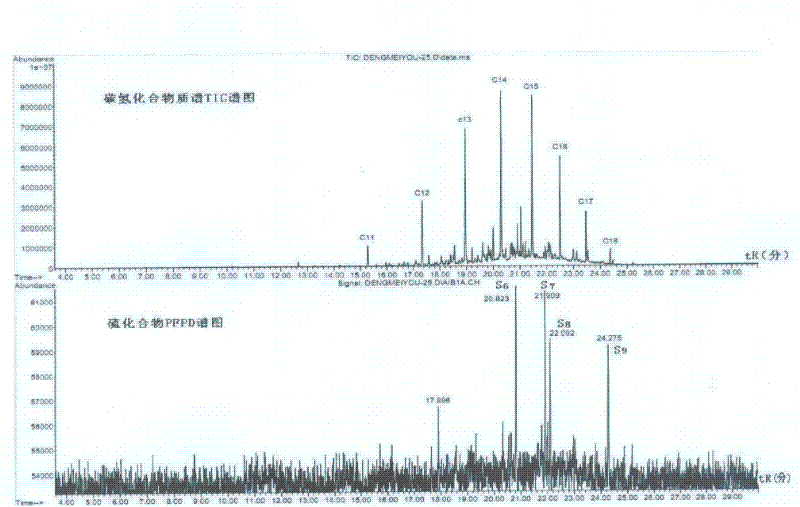Method for synchronously analyzing combustion residues of hydrocarbons and sulfides in fire on-site combustion improver
A technology for burning residues and hydrocarbons, which is applied in the direction of analyzing materials, material separation, measuring devices, etc., to achieve the effects of good reproducibility, easy identification and stable data
- Summary
- Abstract
- Description
- Claims
- Application Information
AI Technical Summary
Problems solved by technology
Method used
Image
Examples
Embodiment Construction
[0028] Firstly, the samples extracted from the fire scene were put into the headspace sampler for solid-phase microextraction. Then the extracted components are subjected to thermal analysis on the GC-MS, the component mixture is separated in the gas chromatographic column, and passed through a synchronous splitter at the end of the chromatographic column, the separated components are divided into two synchronous Send it to the mass spectrometer detector (EI source) and the pulsed flame photometric detector (PFPD), and obtain the analysis results of hydrocarbons and sulfides at the same time.
[0029] The samples are 90#, 93#, 97# gasoline; -35#, -20#, -10#, 0# diesel; kerosene.
[0030] Sulfide standards: thiophene, 2-methylthiophene, benzothiophene, dibenzothiophene, 4,6-dimethyl-benzothiophene standard.
[0031] The inventive method step is as follows:
[0032] (1) Extraction of combustion residues of gasoline, kerosene and diesel at the fire scene:
[0033] Gasoline, k...
PUM
 Login to View More
Login to View More Abstract
Description
Claims
Application Information
 Login to View More
Login to View More - R&D
- Intellectual Property
- Life Sciences
- Materials
- Tech Scout
- Unparalleled Data Quality
- Higher Quality Content
- 60% Fewer Hallucinations
Browse by: Latest US Patents, China's latest patents, Technical Efficacy Thesaurus, Application Domain, Technology Topic, Popular Technical Reports.
© 2025 PatSnap. All rights reserved.Legal|Privacy policy|Modern Slavery Act Transparency Statement|Sitemap|About US| Contact US: help@patsnap.com



